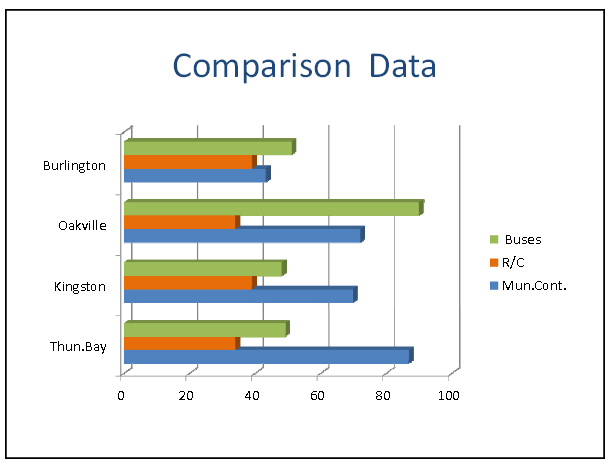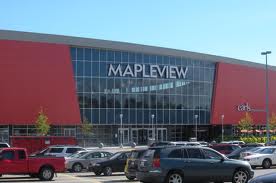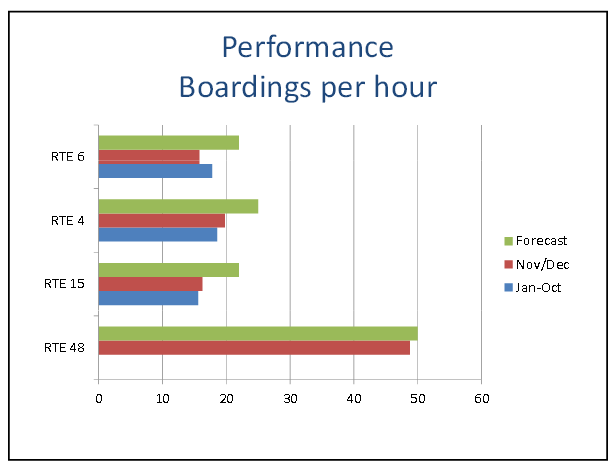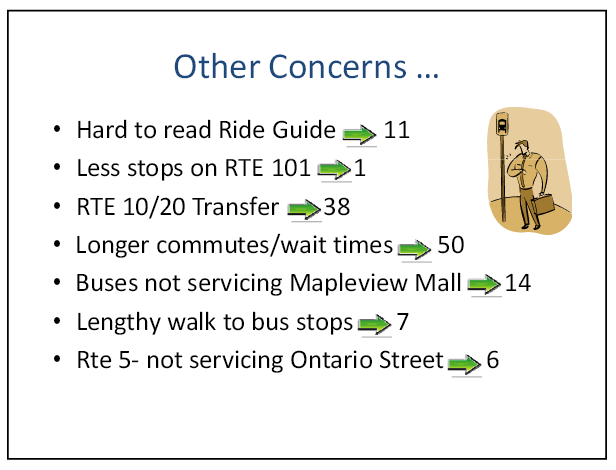February 22, 2014
BURLINGTON, ON.
A report from John Duncan, Transit Manager was what staff call a “walk on” – wasn’t prepared and circulated much in advance and the public didn’t have much time to read and review the document that focused on the November 3, 2013, a significant change to the Transit route network was implemented in order to address the following concerns raised by council and transit users:
Late night service;
Extended holiday service;
Increased frequencies on high demand routes;
Improved service to employment corridors;
Improved connections to GO rail service; and,
Route inefficiencies.
City council was having a problem with transit and the public was divided: people would complain that they saw buses going up and down the streets empty, transit riders complained about the poor service and the transit advocates said the problem was underfunding.
Council and the city finance people were looking at the amount of money being spent and a system that didn’t appear to be delivering what was needed.
The then director of transit advised the city she wanted to retire which left things in a bit of an awkward state as the city transitioned from one transit director to the next.
Mike Spicer, who was on staff at transit was appointed the new director of transit. He needed some time to get a stronger grip on what had been happening and then to assemble the staff he felt were needed to implement the changes. Spicer has been the voice for transit at committee meetings.
City manager Jeff Fielding directed Spicer to modify the routes and get more coverage with the same fleet. The transit users felt the changes were close to draconian. Fielding wanted more data so fact based decisions could be made. The public would watch council chatter away for an hour over the five or six complaints over service on a particular bus route yet pay little attention to the several hundred people using the route.
 Last November the transit people introduced a new schedule with a lot of changes – and that took time for people to adjust to the different routes and schedules.
Last November the transit people introduced a new schedule with a lot of changes – and that took time for people to adjust to the different routes and schedules.
Transit had to find efficiencies in order to fund improvements and provide service in other areas of the Transit network; that meant reallocate existing available resources. This was accomplished through the reduction or elimination of service on some routes, based on underutilization.
Change to anything does not come easily. While the service change allowed Transit to establish a baseline service that could be built upon when future funding becomes available they also generated a substantial number of complaints: 270 that can be directly attributed to the November 3, 2013 service changes. That is 270 in a two month period for a service that carried an average of 175,000 passengers a month. That figure climbed to 350,000 during November and December.

The amount of money Burlington pumps into its system is far less than Oakville – and it shows in the service we offer.
Transit staff are struggling with what’s coming at them. The changes were made last November and they are now monitoring the usage and looking for ways where, based on the traffic count, changes can be made. What transit had to get away from was reacting to a couple of dozen complaints and having council beat them up all the time.
Spice, director of transit explained that there had been:
Limited time for transit users to become familiar with the network;
Seasonal changes effecting transit use; and,
Limited data collection window – less than three months.
Transit staff engaged from the DeGroote School of Business to assist with survey work to further understand the travel patterns, in the south-east section of the transit network, where significant changes were implemented resulting in the greatest volume of service type concerns.

At busy holiday shopping periods buses get trapped in Maple View Mall – killing schedules. City is in talks with the Mall management.
Traffic in and out of Mapleview Mall has been a disaster for transit. “when we get in there we can’t get out sometimes” explained Spicer at a committee meeting. Our buses get trapped in the mall which throws our schedule out of whack.” Transit is negotiating with the mall to see if they cannot find “bus only” access points to the mall property. Those talks do not appear to be going al that well. Time perhaps for the Mayor to pay a friendly visit to mall management; if he doesn’t hear the words transit users need – he has a “bully pulpit” he can use.
As part of the budget preparation process Mike Spicer was directed to reinstate service frequencies that were removed from underutilized routes. Because the changes in November 2013 were a reallocation of existing resources, there would be a cost associated with increasing service frequencies. Add to that the lack of additional buses or operators currently available – making it tough to get back some of the services that were cut. Spicer was between a rock and a hard place.
The transit team prepared two scenarios that identify the resource needs to reinstate service frequencies to previous levels in underutilized routes.
In Scenario “A”, Spicer reported there would be no discernible increase in ridership. Scenario “B”, showed the potential for a rise in ridership – the table sets out the approximate costs and revenue associated with each scenario:
|
ScenarioOptions |
AnnualHRCost (Operators) |
AnnualOperatingCost |
CapitalCost (BusPurchases) |
AnnualRevenue |
Total |
|
(A)Increasefrequencies duringoffpeakservicehours |
$481,528 |
$211,475 |
$0 |
$0 |
$693,003 |
|
(B)Increaseoverallservice includingfrequenciesandroutes |
$1,084,592 |
$548,938 |
$1,470,000 |
($245,000) |
$2,858,530 |
Not hard to grasp what the issue is for council – where do they find the additional $2 million.

The revised routes are not meeting their forecasts yet but it is a bit too early to have sound data.
Burlington isn’t a city that makes heavy use of transit; partly for historical reasons, partly because the service isn’t all that good and partly because council doesn’t believe their constituents are prepared to pay for the service.
Early in the term of this council there was a fight over the level of service in ward 5 – Councilor Sharman territory. For a while there was a battle of petitions with the transit users gathering 250+ names to continue with a service while the councilor’s followers came up with less than 50 names on their petition. The service was changed despite the lopsided numbers and there is now no longer a bus service along Spruce Avenue – which happens to be the street the council member lives on.
Spicer makes on additional telling comment in his report: A funding source has not been identified to reinstate or supplement transit service levels. The report adds that there just isn’t enough data in yet to know what needs to be changed and doesn’t support throwing money at a problem that isn’t as clear as the transit advocates want people to believe it is.
Prior to the November 2013 service changes, a number of public engagements, notification and education initiatives were undertaken. These included:
Public information sessions on September 7th and 8th of last years at the Burlington Mall; the Bfast people (Burlington For Accessible Sustainable Transit) say these session were a bit of a joke. Transit used Social Media – Twitter; Local television and newspaper; the Transit website; Email alerts to subscribers; Bus destination signs and posters; items in the City Update; Media releases along with Transit Operator bulletins, postings and letters.
Add to that a group of 20 Transit Operators who engaged the public to review and discuss the service changes prior to implementation. And yet there is still a significant amount of dis-satisfaction over the levels of service.
Transit staff are not recommending any change or increase to transit service levels until sufficient system use data can be collected for analysis and a growth strategy can be prepared for council review and approval.

The 270 complaints recorded don’t appear to be very high – not until they are put into perspective – the number is for a two month period only.
A couple of members of council had a little trouble digesting the fact that the transit service will be paying bus cleaners $65,000 a year. They will be defined as “mechanic’s helpers” and will also fuel buses and do other related work. Councillors Dennison and Taylor choked on that rate of pay. Director Spicer explained the situation he was in with the outside bus cleaning firm and council went along with him.
This looks like one of those situations where everyone has to wait until there is sufficient data – and that takes time. Once the data is in hand, transit would be well served to hold a Saturday workshop that is broadly promoted where the data can be discussed by staff and the people who use the busses.
In the past we have seen public events on transit with few, in one case in Aldershot no one showed up, in attendance. People later said they didn’t know the event was taking place. Far too many bureaucrats rely on social media believing that is the answer to all their information and communication needs. What amazes us is that transit doesn’t use the bus drivers to promote the meetings. Why not have the bus drivers hand out transfer size piece of paper to each passenger as they get on the bus – talk about having your target market right in front of you.
It would be effective and a lot cheaper than advertising or taking up space in city publications that are poorly read.
Transit is said to be in transition – many are not sure it is transiting in the right direction.
Background links:
What kind of transit service will the city have for seniors?
Bfast wasn’t impressed with the last-minute transit report.



















I used to take the bus regularly to the Burlington Go but I find it inconvenient now with deplorable service. An example: When the GO train pulls in you have to literally run to catch the bus because they will not wait (though some of the nicer drivers will), but frequently despite people running and flagging the bus down, the #10 bus will simply drive by with the driver smiling and shaking his head. I have complained and I get “there is a schedule to keep”. 1 minute would all it would take to pick up 3 or 4 people pleading for service. The schedule appears to be forgotten when it suits them; when it’s a cigarette break and they delay leaving for 7 minutes. Another example … on the #10 the bus no longer goes into Mapleview but rather than add another shelter, they took down one larger shelter at Maple and Fairview area! They erected a new one that barely holds 4 people at the corner further down. This is despite the fact that more people get on the #10 then anywhere else. It’s not just me either … I co-worker who used to the take the bus from the north Appleby area to the Appley Go no longer can because the bus was changed to go to Burlington Go. Makes no sense at all. I could “go” on with more examples but from where I sit Burlington does not want to encourage people to use public transit – it wants people to NOT use it.
What needs to be said about the presentation given by Mr Spicer is it was an exercise in Newspeak. That is, the Powepoint claims BT is doing a good job while it is doing a poor job.
One example is the number of boardings on and off per hour is up, (not the number of customers). The reason for this is due to the changes to routes. Trips that used to take one or two busses now take two, three, and four busses. Customers must now transfer where they didn’t have to in the past. This means a longer commute and a wait, in the cold.
Who, wants to take a bus when one is faced constantly with this kind of gerrymandering?